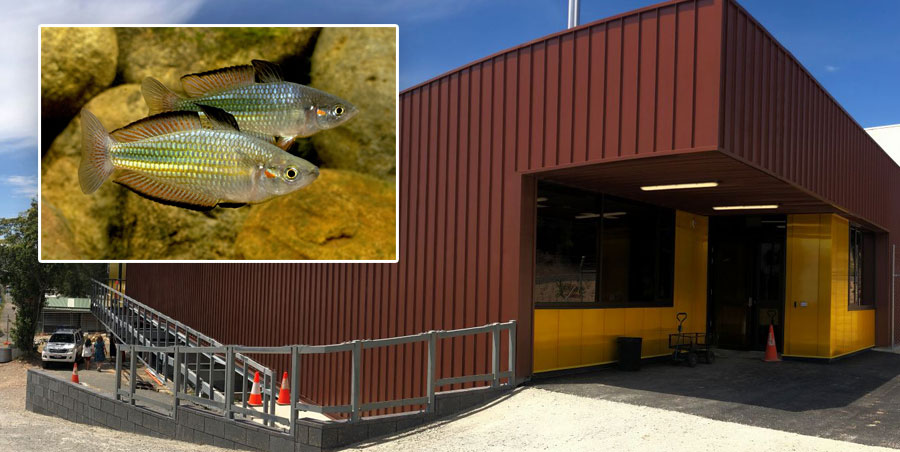
Flinders University’s new animal house in the College of Science and Engineering set to redefine research and education for an astounding array of animals.
The state-of-the-art facility is the most diverse for biodiversity, conservation and research hub in the state. The unique design allows the space to be flexible and adaptable for a range of applications opening up opportunities for study and research alike.
 Animal Facilities Coordinator Leslie Morrison was a big part of the planning of the new building and seeing it come to life has given immense satisfaction. “You feel it when you walk in the space. Positive. With the focus of the research, you know you’re doing good. You’re helping the animals.“
Animal Facilities Coordinator Leslie Morrison was a big part of the planning of the new building and seeing it come to life has given immense satisfaction. “You feel it when you walk in the space. Positive. With the focus of the research, you know you’re doing good. You’re helping the animals.“
Beyond the benefits to the animals and to researchers, it also offers plenty to students. “For the students it’s going to be amazing. It’s somewhere they can come to work with a huge range of animals for biodiversity and conservation and really help make a difference.”
The aqua rooms will house rainbowfish and clownfish, amongst others, while the terrestrial room will host a number of reptiles from sleepy lizards, tawny dragons, pygmy bluetongues, gidgee skinks.
The facility will also play a pivotal role in research and husbandry of birds of prey, platypus and Port Jackson sharks.

Professor of Biology and Ecology, Mike Gardner, whose research centres on reptiles, already sees the benefits. “This new facility is proving to be essential for my research. It offers us the ability to control the environment in the rooms, so we can change the humidity and temperature to suit different scenarios we might be trying to play out. We also have the potential to control disease, we’re bringing in wild animals and this new facility allows us to keep them quarantined.”

Professor of Biodiversity Genomics, Luciano Beheregaray, who is conducting research on rainbowfish in the new building, is also glowing of the many upsides the site offers. “It’s very exciting to have this brand new facility because not only can we manage our research in ways we couldn’t do before – we have sophisticated equipment, great setup – but we can bring our students and show them exactly how the research is done. That produces a phenomenal opportunity for us to link the great research we do at Flinders with our teaching and improve the learning outcomes of our undergrads.
It’s no surprise the building is delivering for those already taking advantage of its benefits. Behind the spectacular frontage is well considered and crafted space, designed to maximise outcomes for all involved. It’s something Leslie Morrison and her team are very proud of.

“The room fit outs and environmental controls have been carefully considered and designed to suit our current and predicted animal teaching and research directions, rather than retrofitting existing rooms. We are now able to control temperature, lighting and humidity via an online Building Management System, including alarms to advise if there are any failures of the set parameters; allowing us to fine tune the husbandry requirements for the different types of animals we care for.
“An innovative water reticulation system has been designed to give enormous flexibility in how aquatic systems run – supporting a variety of experimental designs and efficiencies in husbandry.”
“There’s also a dedicated algae and invertebrate culture room with a Bioreactor shipped all the way from Canada, that can grow algal cultures in days that would otherwise take weeks, specific rooms for storage, laboratory work and insect breeding and an inspiring Education room for student engagement activities – shark dissections, presentations, animal adaptation workshops.”

